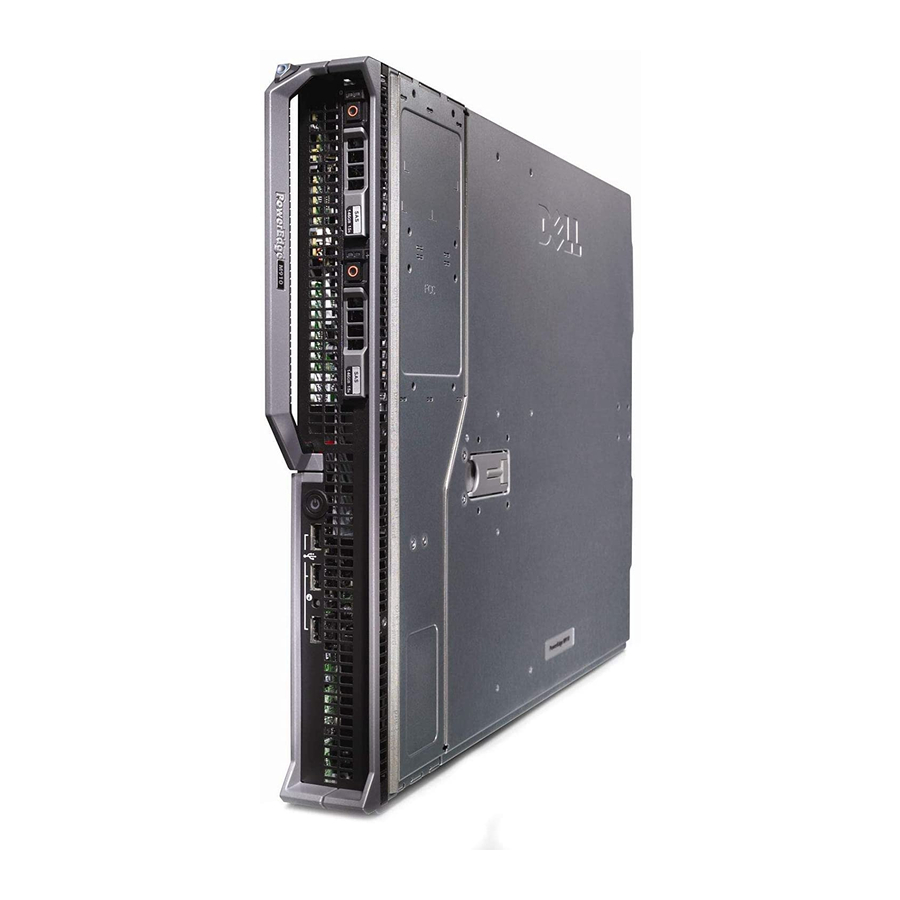Thermal
The M910 thermal solution includes:
Optimized airflow impedance for individual blade and chassis level airflow balancing
Custom air baffling directs airflow through the components to maintain proper cooling
Custom-designed heat sinks maintain CPU, IOH and Intel 7500 chip temperatures within thermal
design targets
Highly Optimized Fan Control Algorithm such as the following:
Base fan speeds are a function of hardware configuration and ambient temperature to
—
minimize airflow for a given environment
PID control algorithms are used for both CPU and DIMMs to maintain appropriate thermal
—
margin
Double refresh switching allows for DIMM temperature excursions up to 95°C while
—
maintaining performance and thermal design targets as follows:
The M910 thermal algorithm monitors the thermal sensor on each DIMM to maintain
>
DIMM temperatures below the typical 85°C specification in normal operating conditions.
Under extreme operating conditions, the thermal algorithm can switch the DIMMs into
>
Double Refresh mode allowing an additional 10°C of thermal headroom. In Double
Refresh mode, DIMMs are allowed to operate as high as 95°C.
Power efficiency
One of the main features of blade servers is enhanced power efficiency. The PowerEdge M910
achieves higher power efficiency by implementing the following features:
User-configurable power options via the M1000e CMC
Improved power budgeting
Voltage regulator efficiency improvements
CPU VR dynamic phase shedding
Switching regulators instead of linear regulators
Closed loop thermal throttling
Use of DDR3 memory (lower voltage compared to DDR2)
Memory VR static phase shedding
BIOS Power/Performance options page
Active Power Controller (BIOS-based CPU P-state manager)
Ability to throttle memory
Ability to disable a CPU core
Ability to turn off embedded NICs or PCIe lanes when not being used
Energy Smart components at the M1000e chassis level to selectively enable more computing
performance with less power consumption
PowerEdge M910 Technical Guide
18

